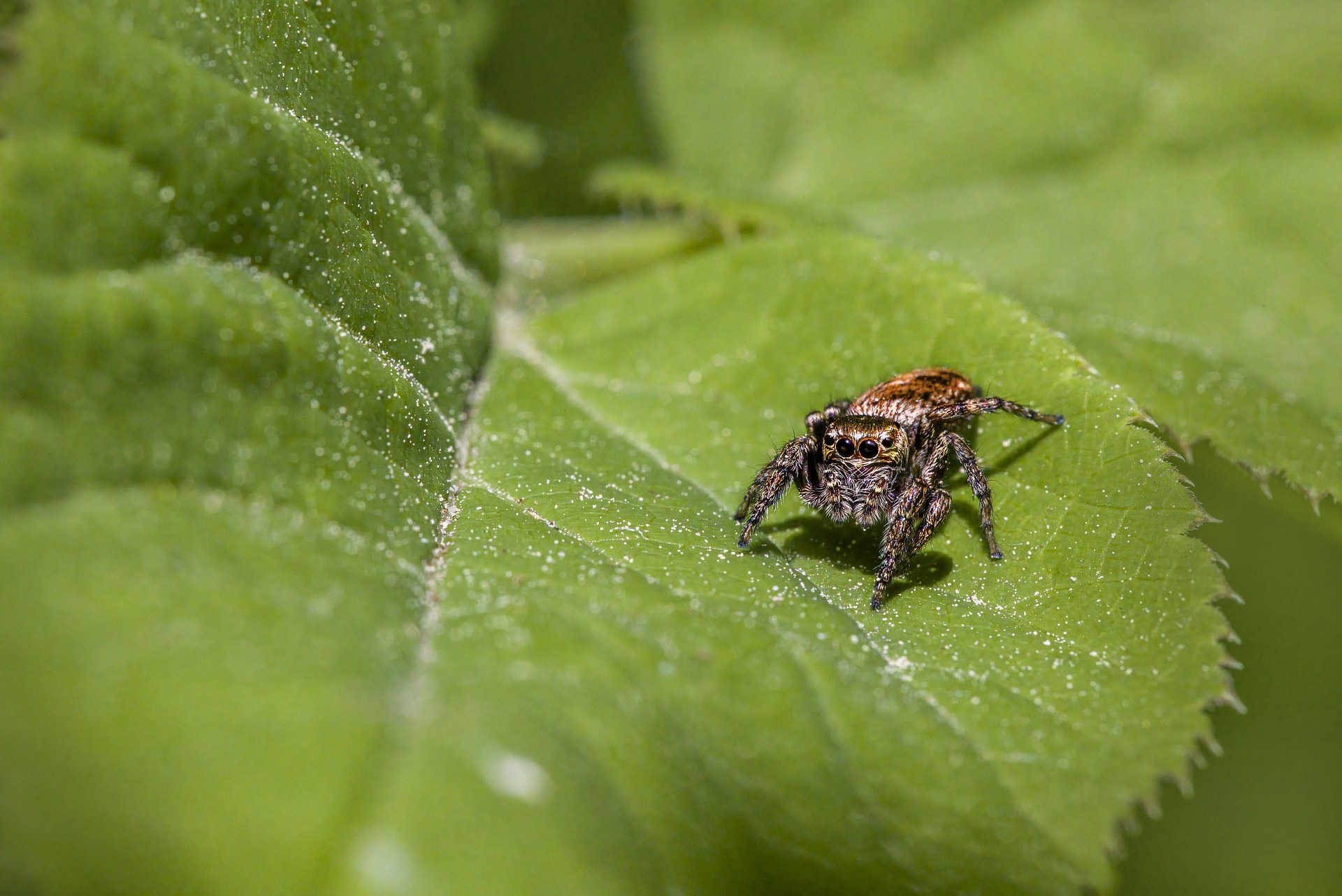Jumping spiders are a diverse group of spiders belonging to the family Salticidae, known for their excellent vision, agility, and unique hunting behavior. Here’s some information about jumping spiders:
- Appearance: Jumping spiders are generally small to medium-sized spiders, with most species ranging from 3 to 10 millimeters in length. They have compact bodies, short legs, and large, forward-facing eyes. Their eyesight is exceptional for spiders, with some species capable of seeing in color and discerning fine details.
- Habitat: Jumping spiders are found in a wide range of habitats worldwide, including forests, grasslands, deserts, and urban areas. They are often encountered on vegetation, walls, fences, and other surfaces where they hunt for prey.
- Hunting Behavior: Jumping spiders are active hunters and rely on their keen eyesight and agility to locate and capture prey. They use a unique hunting strategy known as “salticid pounce,” where they stalk their prey, then leap forward to deliver a precise and lethal strike. Jumping spiders are known to prey on a variety of insects and other arthropods.
- Communication: Jumping spiders are capable of complex visual communication, using visual displays and body movements to communicate with conspecifics (members of the same species) during courtship and territorial disputes. Males often perform elaborate courtship dances to attract females.
- Lifecycle: Like other spiders, jumping spiders undergo a complete metamorphosis, progressing through egg, larva (spiderling), juvenile, and adult stages. Female jumping spiders typically produce silk egg sacs, which they attach to vegetation or other structures. The spiderlings hatch from the eggs and undergo several molts before reaching adulthood.
- Ecological Role: Jumping spiders play important roles in ecosystems as predators, helping to control insect populations and maintain ecological balance. They are voracious hunters and contribute to the natural regulation of insect pests in agricultural and urban environments.
- Conservation: Jumping spiders are not generally considered threatened, although specific species or populations may be affected by habitat loss, pesticide use, and other human activities. Conservation efforts aimed at preserving natural habitats and reducing human disturbance can benefit jumping spider populations and biodiversity in general.
Jumping spiders are fascinating creatures admired for their agility, intelligence, and intriguing behaviors. Their curious and inquisitive nature makes them popular subjects for scientific research and observation by nature enthusiasts.
Views: 16
Subscribe to the newsletter:
